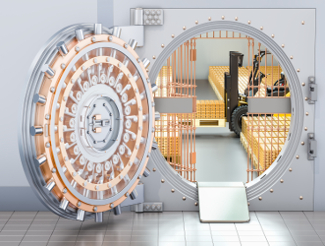When it comes to assessing the actions of central banks, it’s important to pay more attention to what they’re doing rather than what they’re saying. When the Fed says that it’s going to stop running down its balance sheet, look at the H.4.1 release each week to see if that’s actually the case. And when central banks say that you can trust their currencies and that there’s no reason to invest in gold to protect against inflation, look at what central banks are actually doing with their currencies and what assets they’re buying.
For yet another month the world’s central banks were net buyers of gold, with 35 tonnes of reserves added to official figures. China accounted for much of that, with 10 tonnes added to its reserves. It’s a confirmation that gold, far from being a “barbarous relic,” remains the ultimate store of wealth. And those additions to their reserves will continue to push gold prices higher. Central banks around the world are anticipating the coming financial crisis and looking to shore up their assets to get prepared.
Ordinary investors should do the same, as the time for a stock market crash is coming soon. Preparing for the likelihood of a stock market crash by investing a portion of their portfolio in gold is the smart move that most investors should make. Those who invested in gold before the last financial crisis saw their portfolios protected, as stocks declined by 50% while gold increased by 25%.
Gold continued to gain after the worst part of the financial crisis passed, and there’s every indication that the same pattern will take shape during the next financial crisis. Being able to depend on gold maintaining its value throughout a time of financial turmoil can be invaluable, not just in terms of being able to protect asset value but also in terms of the peace of mind that it can bring to investors worried about the future.
This article was originally posted on Goldco.





